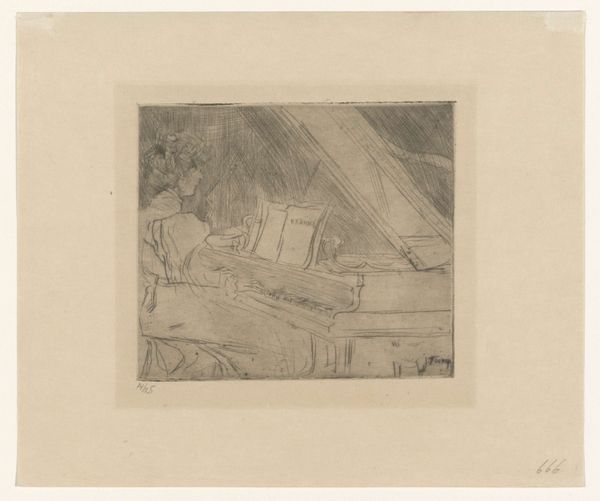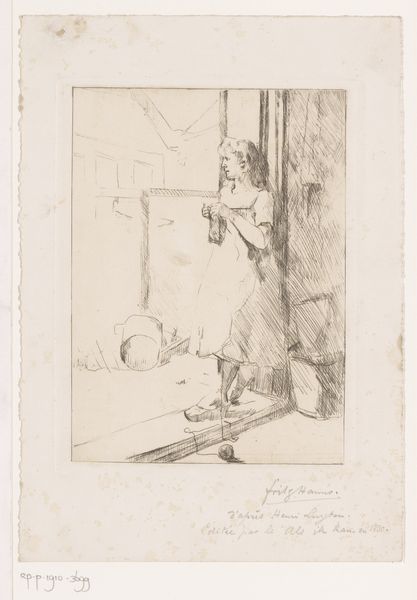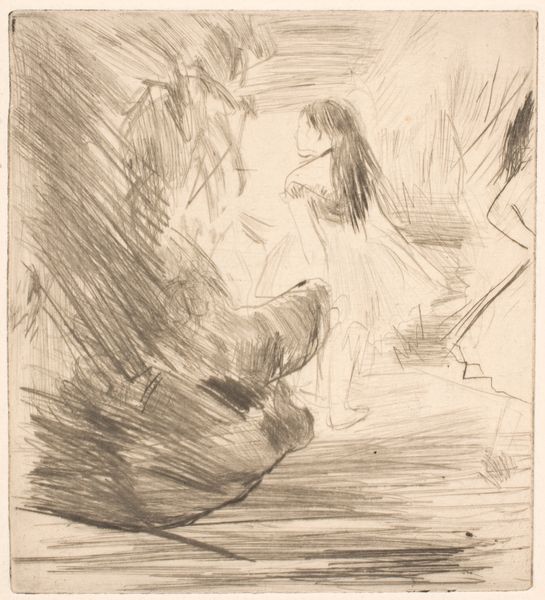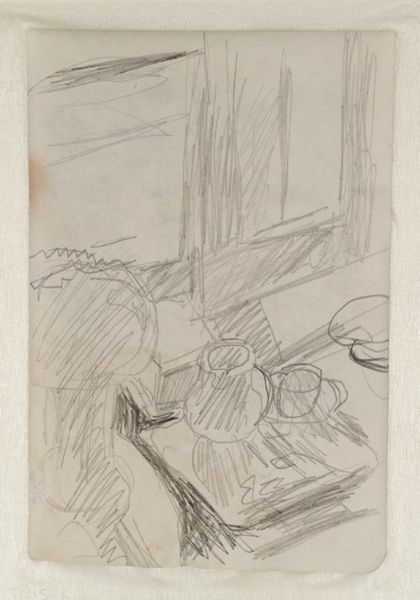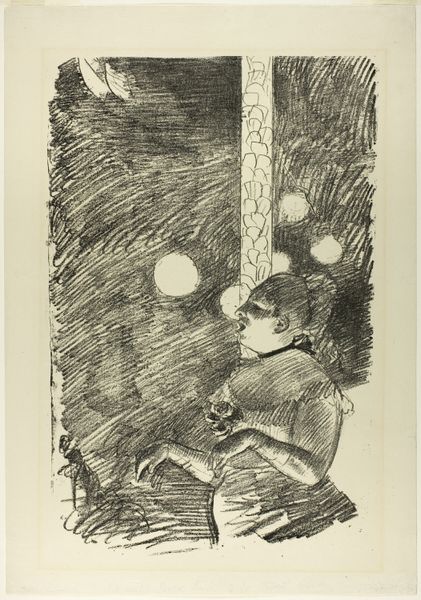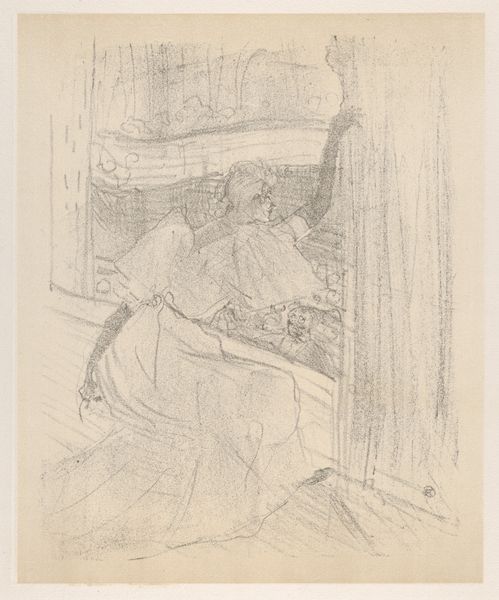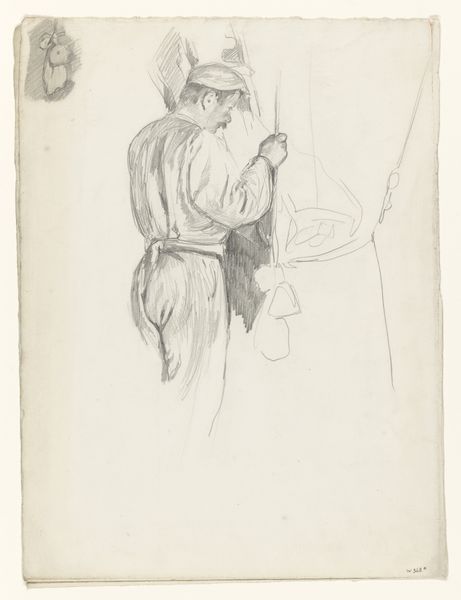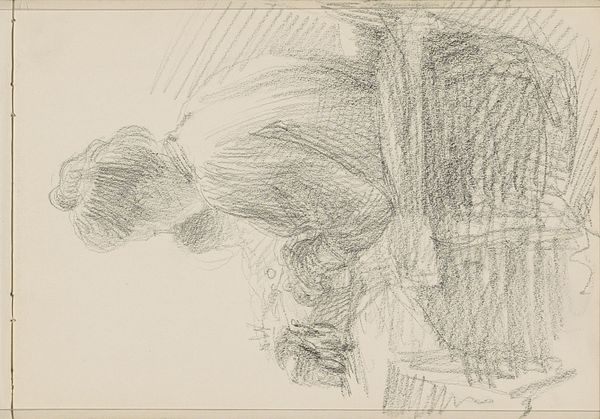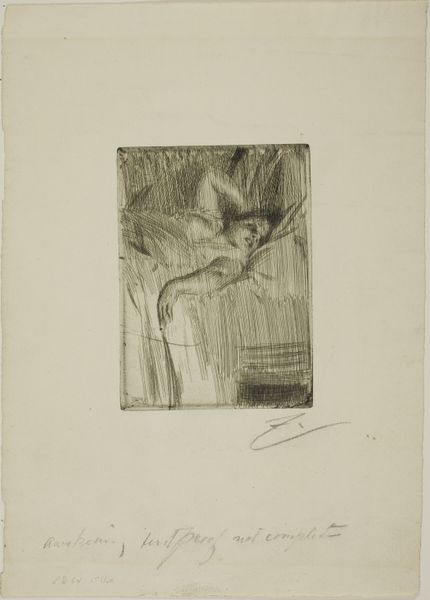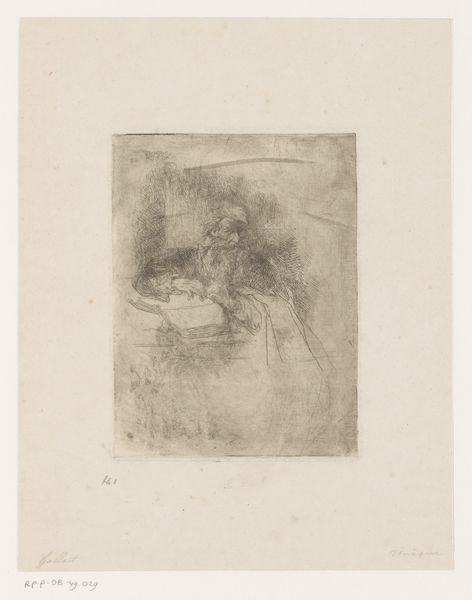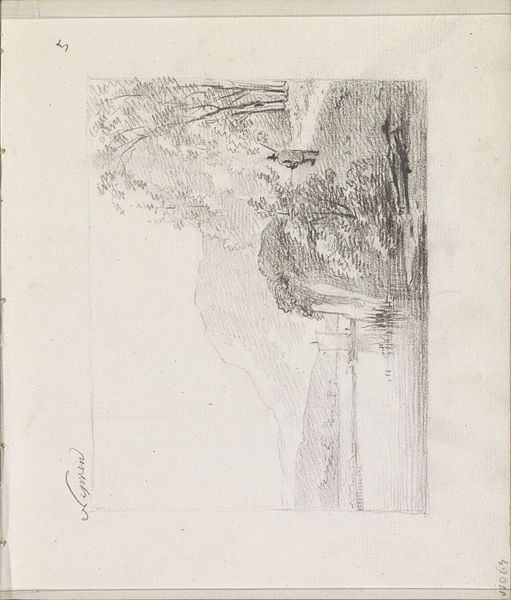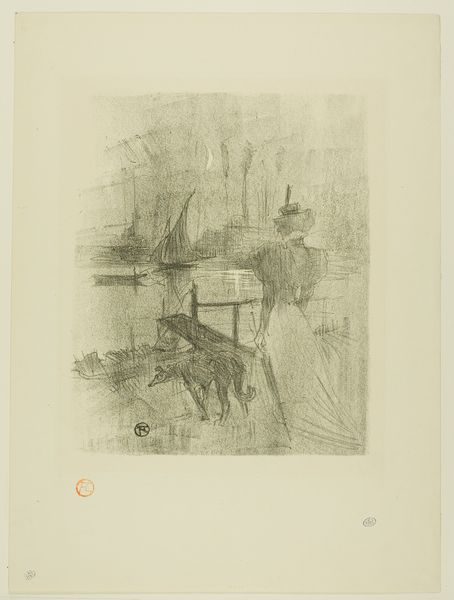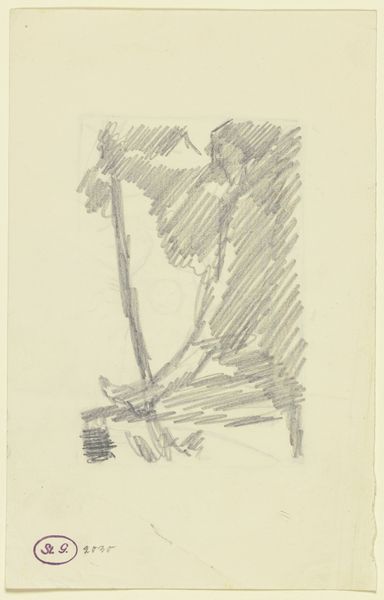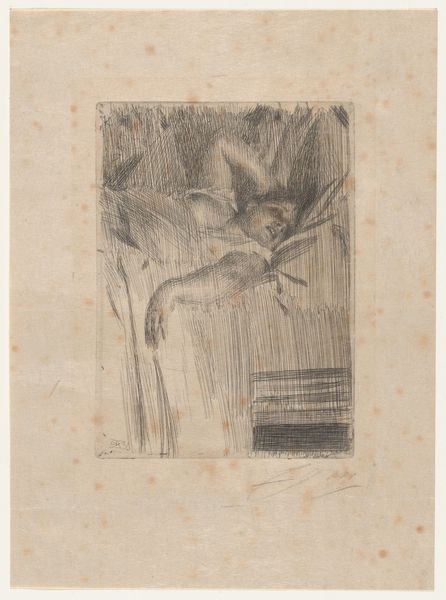
drawing, lithograph, print, paper, ink, pencil
#
portrait
#
drawing
#
lithograph
# print
#
impressionism
#
pencil sketch
#
figuration
#
paper
#
ink
#
pencil drawing
#
pencil
#
cityscape
Dimensions: 256 × 194 mm (image); 310 × 230 mm (sheet)
Copyright: Public Domain
Editor: This is Edgar Degas’ "Singer at a Café-Concert," created between 1876 and 1877, using lithography, ink and pencil on paper. It feels so fleeting and ephemeral. The woman is off-center and there's so much empty space. What symbols or deeper meanings might be embedded here? Curator: The very ambiguity you notice is key. Consider the café-concert. What does that space represent in late 19th-century Paris? It’s a nexus of social classes, a space of performance, of fleeting encounters, and a place of displaying oneself. Degas captures a cultural shift—a move towards mass culture. Notice how the singer's gesture with her hand. Think about what she’s 'giving' and what is being 'taken' or remembered. Editor: It seems as though her hand is floating without actually giving or taking. What about the composition? The heavy use of shadows and her placement feels deliberate. Curator: Absolutely, Degas's composition heightens the singer's symbolic weight. Her isolation, even amidst a crowd, hints at the commodification of the performer and the observer's role. Degas implies she has 'lost her spirit' so to speak, for a price. Editor: So it's about more than just a scene. It critiques a cultural phenomenon of Parisian entertainment? Curator: Precisely! Think of this image as a cultural memory embedded in symbols, not simply of a singer but of a society grappling with rapid change, consumption and display. The open space isn't 'empty' so much as activated for social tensions to come to the surface and fill in the spaces. The eye and the hand collaborate. Editor: I didn't initially pick up on those critical themes within what seemed like a quick sketch. It's amazing how much history and social commentary can be packed into a single print. Curator: Indeed! Visual symbols transmit emotional and psychological resonance through generations. The 'incomplete' sketch speaks louder in a way, hinting to things without ever needing to reveal explicitly, because symbols bridge that understanding with an intellectual conversation.
Comments
No comments
Be the first to comment and join the conversation on the ultimate creative platform.
